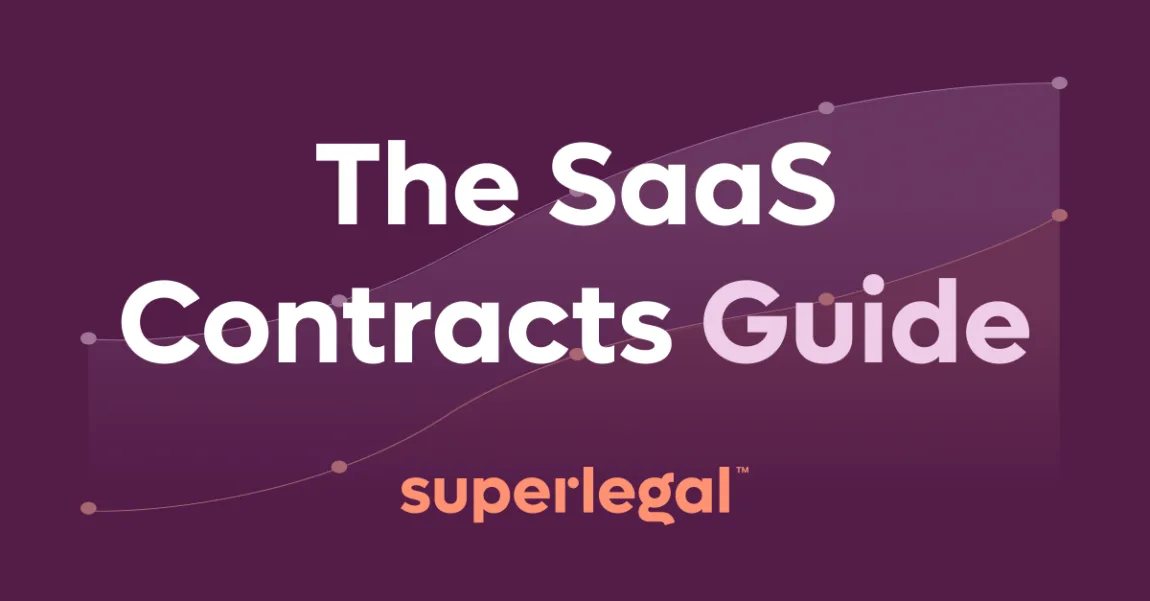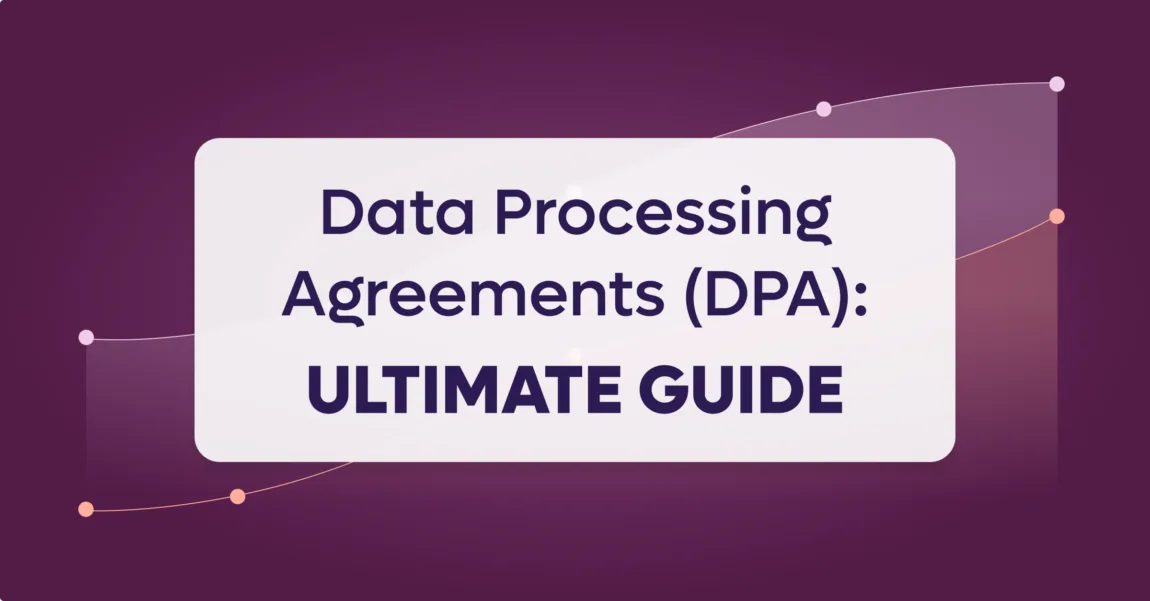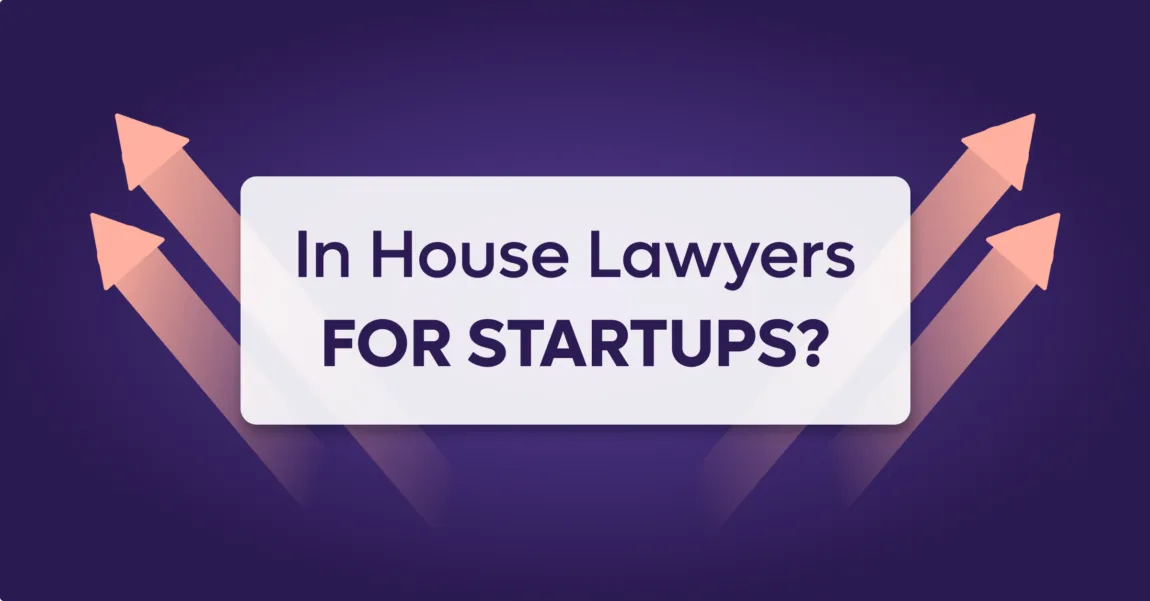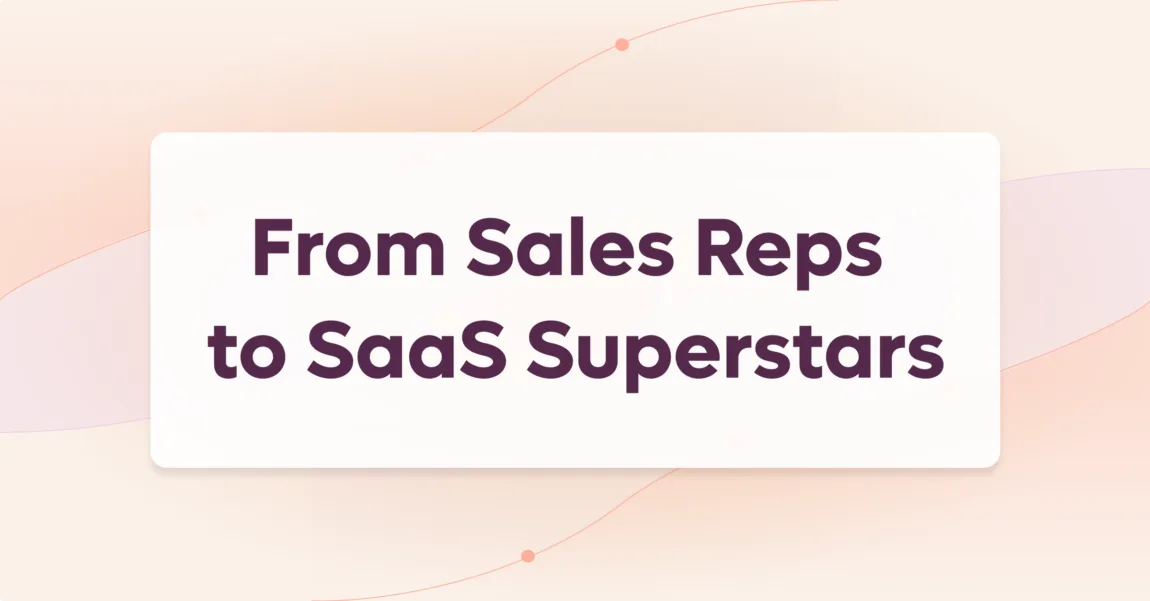Software as a Service powers nearly everything we do, and business deals are no exception. Before buying or adopting a new SaaS tool, you’ll need to dig into the contract—the agreement that spells out terms affecting your data, costs, and day-to-day operations—to decide if moving forward is right for you.
If you’re new to SaaS contracts, managing one can feel like learning a new language. Each contract is full of essential clauses around data security, renewal terms, service quality, and plenty of legalese. The good news? The more you know about the types of SaaS contracts and their key elements, the better you’ll protect your business and get maximum value from any software you choose.
This guide is here to demystify SaaS contracts for you. We’ll cover the fundamentals, from service descriptions to renewal clauses, and share practical advice for managing these agreements effectively. By the end, you’ll understand how SaaS contracts work, regardless of your position.
What is a SaaS contract?
A SaaS contract is an agreement between a SaaS provider and a customer, laying out all the terms that define how a business can access and use the provider’s software—without actually owning it. Instead of buying a software license outright, customers subscribe to a SaaS product on a monthly/yearly basis.
SaaS contracts differ from traditional software licenses in a few fundamental ways. With a traditional software license, a business buys the rights to install and use software on its own hardware.
In contrast, a SaaS contract gives users remote access to the software via the cloud. The software itself stays on the provider’s servers, with all maintenance, upgrades, and security managed by the provider.
So, where do SaaS contracts really shine? For companies using subscription-based models, or relying on cloud-based services for day-to-day operations, SaaS contracts have become the preferred choice. They’re particularly common for essential business tools like CRM systems, project management software, and analytics platforms—software that benefits from continual updates and high availability.
The flexibility of SaaS contracts also stands out. Businesses can easily scale their usage up or down based on need, adding users or adjusting subscription levels. For organizations looking to stay agile and responsive, the adaptability of SaaS contracting is a huge asset. It’s a scalable solution that makes sophisticated tools accessible.
The purpose of a SaaS contract
At its core, the purpose of a SaaS contract is to clearly define the services being delivered, set expectations for both parties and safeguard your business interests. From data security provisions to support terms, these agreements provide the structure that keeps a business running smoothly.
One of the biggest advantages of SaaS contracting is its ability to minimize risk.
Every SaaS contract includes specific clauses around data protection, usage rights, and service guarantees that protect businesses from potential liabilities or disruptions. For instance, a well-structured SaaS contract will outline how the provider handles sensitive data.
Instead of unpredictable expenses tied to hardware updates or software patches, SaaS contracts offer predictable subscription fees and transparent pricing models. Many contracts include tiered pricing options. This flexibility is a key reason businesses of all sizes find SaaS solutions so attractive.
Additionally, SaaS contracts are often customizable, allowing businesses to tailor certain terms to better align with their needs. In short, a well-designed SaaS contract protects your business while giving you the flexibility to grow. It brings clarity to what can sometimes feel like a complex arrangement.
Key elements of a SaaS contract
A robust SaaS contract includes several key clauses that set clear boundaries and protect the interests of both the provider and the customer. Understanding these key elements of a SaaS contract will help you manage your SaaS agreements effectively and ensure they align with your business needs. Below, we break down each essential term you should look for in any SaaS contract.
Service description
The service description defines exactly what services the provider will deliver. This section details the software’s functionality, specific deliverables, and any service limitations. A clear service description avoids misunderstandings by laying out what users can—and cannot—expect from the software.
Scope of license
The scope of license specifies how your business is allowed to use the software. It includes restrictions on the # of users, user locations, and access permissions. This section also clarifies whether the license is non-exclusive, meaning other businesses may use the same software, or exclusive, where applicable.
Payment terms
In any SaaS contract, the payment terms outline how and when payments will be made. Billing cycles, payment methods, and any penalties for late payments. Some SaaS providers offer monthly, quarterly, or annual billing, and understanding these options can help you manage cash flow and control costs.
Limitation of liability
The limitation of liability clause is a safeguard that restricts the provider’s liability if something goes wrong. This clause caps the provider’s financial responsibility to protect both parties from excessive legal costs. Customers need to understand these limitations so they’re aware of how liability is shared.
Data security and privacy
This clause addresses how the provider will handle and protect customer data. It often includes compliance with privacy laws like GDPR, data encryption practices, and how customer consent is managed. Data security and privacy are particularly important if you handle sensitive or regulated data.
Data ownership
The data ownership clause clarifies who owns the data stored or generated within the service. In most cases, the customer retains ownership of its data, while the provider may have limited rights to use aggregated, anonymized data. This clause ensures that you maintain control over sensitive information.
Intellectual property rights
This section protects the intellectual property of both the customer and the provider. The intellectual property rights clause specifies that the provider retains ownership of the software’s code, trademarks, and proprietary algorithms. Customers can retain the rights to any customizations or data they input.
Renewal and termination
The renewal and termination clause outlines the contract’s renewal terms, notice periods for termination, and conditions under which either party can end the agreement. This section can include auto-renewal options, which may require you to provide notice if you don’t wish to renew.
Types of SaaS contracts
The more your startup grows, the more SaaS contracts you need in place to govern the relationships with your customers and partners of all varieties.
And all your technical wizardry, sales acumen, and motivational management skills simply won’t cut it – if you don’t understand how these contracts work!
You need to make sure you’ve got the right agreements in place to help you scale your operations and your customer base, whilst protecting your business needs and legal risk.
So let’s get into the definitive guide to every type of SaaS contract you need to grow your SaaS business!
1. SaaS Service Agreement
A SaaS Service Agreement, or SaaS Agreement for short, refers to the contract that governs the relationship between you, the SaaS provider, and your customers.
These contracts can also be referred to as Master SaaS Agreements or SaaS Master Service Agreements.
When your customers sign up to your SaaS product, they’re not actually buying your software, but paying for the right to access it via the cloud.
A SaaS service agreement clarifies the access to your software that your customers receive when they subscribe to your service.
Your SaaS service agreements play a key role in making sure your customers know precisely what they’re going to get – the features they’ve signed up for, the level of service they can expect and the payment agreed between you.
Your SaaS Service Agreement should include
- A clear identification of the specific SaaS service applications that your customers may use, together with details of the prices agreed on and how and when those costs will be charged.
- The duration of the agreement between you and your customers, and how the agreement can either be ended or renewed.
- Data security provisions stipulating who owns what data and what rights you’ll need in the data that is provided to you, together with a clear statement that you own the IP in the software.
You may be interested in How to Review a Master Service Agreement (MSA)?
2. SaaS Service Level Agreement
A SaaS Service Level Agreement (SLA) can be a stand-alone document or a section of your SaaS Service Agreement.
The purpose of an SLA is to provide certainty or minimum performance standards over the level of service you provide to your customers; in particular – service availability.
The danger here is that the more “certainty” you provide, the more you open yourself up to liability exposure.
You don’t want to promise the SaaS will be available at all times, 24/7, every day of the year, because there are factors outside of your control.
Your SaaS Service Level Agreement should include
- The specific services and capabilities your SaaS product provides, including performance indicators, metrics and other measures of the quality of your services.
- Response times for time-sensitive issues and guaranteed software uptime.
- Penalties to be levied against you if those guarantees are not met and critical exclusions for which you will not have to pay such penalties or be responsible in any way for software maintenance.
3. SaaS Subscription Agreement
Pricing is one of the most important SaaS agreement terms and a huge area for negotiation in B2B deals.
Some SaaS services allow customers to pay as they go, only paying for the software when they use it.
But most SaaS companies typically run on a subscription model where your customers pay on a regular basis for continued use of your product, i.e. monthly and yearly subscriptions.
A SaaS Subscription Agreement can be a section of your SaaS Services Agreement or separated out into a different contract.
These agreements exclusively govern SaaS services provided by way of subscription.
Your SaaS Subscription Services Agreement should include
- A description of the type of subscription pricing model you and your customer will be entering into – here you can find the top 8 SaaS pricing models in use today.
- A full payment schedule with recurring billing on a monthly or annual basis together with the amount the client is expected to pay each billing cycle.
- A clear statement of the services your customer will receive, and how they will be delivered.
4. SaaS Licensing Agreement
Ok guys, I hope you’re with me so far because this is where things get a little technical.
Pay attention, because this is a big one:
The circumstances in which you need a SaaS Licensing Agreement differ SIGNIFICANTLY from the circumstances in which you need a SaaS Services Agreement.
In other words: they are not the same.
Let’s dive in.
So, we all use SaaS hosted applications every day – Gmail, Office365, Dropbox etc. In all of these examples, the end-user does not physically receive a copy of the software, but is simply granted access to the provider’s servers to use their software online.
A SaaS license does not apply here.
A SaaS License is a different thing altogether and is only to be used in specific (and pretty rare) circumstances – when a company’s end users are being provided by way of a license, with actual copies of the software.
WARNING: SaaS is a service, as the name implies, so in 99% of circumstances, you won’t need a license.
In fact, as a SaaS vendor, if you provide your customers with a license instead of a service agreement – you’re giving over something completely different than what you thought, and the license can come back to bite you!
So make sure you’re correctly using a SaaS Services Agreement.
Only in the rare circumstances that your customer will be putting a copy of your software on their computer – i.e. on-premise software – will the contract require a SaaS Licensing Agreement.
In the circumstance that you do indeed require a Software License, it should include
- A clear explanation of the type of license your customer will receive. The type of license will determine whether the licensee is allowed to use the software on one single computer or on multiple computers in the same location.
- Details of the rights to the software that will remain your property, even after execution of the contract. This includes the software itself, the name, the copyright, the distribution rights, and intellectual property rights.
- A clear statement that your licensee may not transfer the license to another party, nor modify your software in any way – with details of what “modification” means. Your best bet is to limit any modifications, if not completely restrict them altogether.
5. SaaS End User License Agreement
So not to confuse you any further, but a SaaS End User License Agreement (EULA) actually differs from a SaaS Services Agreement and from a SaaS Software License Agreement.
…stay with me, I’ll walk you through it!
The difference between a EULA and a SaaS Services Agreement is pretty straightforward: one is a contract to provide software services and the other is a license to use the software subject to specific terms.
Hope you’re with me so far. Here’s where it gets a bit tricky:
The difference between a SaaS Software License Agreement and a EULA is as follows:
A Software License Agreement governs the direct connection between you and your customers when your software is installed and operated on your customer’s (the licensee’s) hardware, and you (the original creator) retain ownership and control over the use of your software.
EULAs on the other hand are relevant for the distribution of a software app via an intermediary. For example when releasing an app for general use in the App Store or on Google Play.
The terms of a EULA are one-way and grant the user a license to use the app. Users must agree to the terms of the EULA (usually by way of clicking accept/agree) before being able to download the software.
Every SaaS company that gives customers licenses to use software needs to have a EULA.
But remember, unlike Apple, if you’re merely providing access to your service via the cloud – then neither of these types of contracts are relevant to you.
Your SaaS End User License Agreement (EULA) should include
- A clear statement that you offer a license to use your product only, not a right of ownership. Make it understood that you are granting the buyer permission to use your software — not own it.
- A clear statement that if the user infringes on your copyright of the software, you will hold the user legally liable.
- Approved usage of the software, together with strict restrictions on the user that they must not:
-lease, transfer, distribute or sell the license to third parties
-modify, copy or reproduce the software to create derivative works
-use the software in any way that’s illegal or unintended by the licensor
6. SaaS Terms & Conditions
In the context of SaaS, your ‘Terms and Conditions’ relay the rules and regulations of your platform to your customers.
While SaaS Terms and Conditions aren’t actually legally required, it is highly recommended for your company to include them on your site.
Your SaaS Terms and Conditions set out the rules under which your customers can use the site and state what you expect from each user in exchange for your service.
These rules preserve the integrity of your software and protect your reputation and control over your site.
They also protect your customers – ensuring that your users’ interaction with your service doesn’t land you or them in hot water!
Your SaaS Terms and Conditions should include
- A clear statement on the prohibited use of your software, including a list of actions your customers may not take, including actions that damage the site, its reputation, or its intellectual property.
- A clear termination clause that reserves your right to end access or remove the accounts of users misusing your platform. This term is essential as it allows you to take swift action to protect your site and other users.
- A clear statement of the Intellectual Property you own and the rights you reserve in it, informing your users that they cannot use your property without your permission. Provide a way to report copyright infringement if your website or app allows users to share user-generated content.
7. SaaS Reseller Agreement / SaaS Distributor Agreement
Many SaaS vendors choose to use a local partner to resell or distribute their SaaS solution to customers outside of the countries in which they are based.
In these circumstances you would partner with a SaaS reseller or SaaS distributor, and would require a SaaS Reseller Agreement.
The SaaS reseller purchases the software in order to resell it to its own local customers in its local territory using its own terms and conditions.
The SaaS company itself does not enter into a legal relationship directly with the SaaS reseller’s customers. The end customer enters into a SaaS agreement with the reseller directly.
But the SaaS Reseller Agreement governs the nature of the relationship and the rights and obligations between you and the reseller.
Your SaaS Reseller Agreement should include
- In cases where the vendor and reseller are located in different countries, you must clearly set out the jurisdiction in which the laws governing the agreement will be based.
- A clear statement of who retains ownership in the IP and the rights and licenses in place to facilitate performance of the contract.
- A schedule for software maintenance and updates. Typically, as the SaaS provider you would remain responsible for updating and maintaining the software throughout the contract’s lifetime.
8. SaaS Channel Partner Agreement
A SaaS Channel Partner promotes your SaaS to new audiences in exchange for a reward for each new customer.
The reward can be anything from cash rewards and sales commissions, to tangible incentives.
Together you can share common customer bases, boost your brand’s reach, and create a customer exchange channel that’s mutually beneficial.
Some major SaaS companies like HubSpot, SEMrush, Zendesk, and Databox launched successful SaaS Channel Partner Programs in the early stages, in order to help scale their business, boost revenue and accelerate growth.
A SaaS Channel Partner Agreement governs the relationship between you and your SaaS Channel Partner.
Your SaaS Channel Partner Agreement should include
- The rights and obligations of each of the parties, including clear terms and guidelines for the marketing and advertising activities to be undertaken.
- A confidentiality clause to protect both companies from leaked trade or proprietary secrets, together with a statement of who will retain ownership of the Intellectual Property in your product, website and marketing materials.
- Payment terms including how, when and how much will be paid for each activity, together with the duration of the agreement and circumstances triggering termination.
9. SaaS Referral Agreement
A SaaS referral agreement is an agreement whereby a company refers new leads to your SaaS company, and in return receives a kickback for a percentage of the value of the deal.
As the SaaS vendor, you will determine the amount of commission and referral fees that will accrue to the referrer over time, based on the end-user’s subscription to your product.
This type of agreement doesn’t need to be overly long or complex.
The sole purpose of a SaaS Referral Agreement is for your referral partner to understand the conditions for a ‘qualified referral’ and the terms in which they receive their due commission.
Your SaaS Referral Agreement should include
- The type of referrals you are willing to pay for and the criteria for a ‘qualified referral,’ including timeframes and agreed formats.
- How payments will be handled, including commission structure, payment intervals, returns and credits.
- An acknowledgment that the agreement is a Non-Exclusive SaaS Referral Agreement whereby each party has the right to recommend similar products and services and to work with other parties.
You may be interested in:
How to Review an NDA?
SaaS Contract Review Guide For Better Contracts
The Complete Software License Agreement Contract Guide
Challenges of SaaS contracts
While SaaS agreements offer numerous benefits, they also come with their own set of challenges.
Customization and negotiation challenges
One major hurdle with SaaS agreements is limited flexibility. Many SaaS providers use one-size-fits-all contracts that may not account for a customer’s unique requirements. This lack of customization can be frustrating for companies looking for specific data handling practices, support levels, or tailored terms.
Data security concerns
One of the most pressing concerns is data security. With SaaS, data is typically stored offsite—often in third-party data centers—customers using SaaS solutions must be able to trust the provider’s security protocols. However, not all providers maintain the same standards, leading to risks around data breaches, unauthorized access, and data loss.
Compliance with international regulations
SaaS agreements must account for laws like the GDPR in Europe or data localization requirements in countries like China and Russia. Providers may not always address these varied regulations comprehensively, which can leave businesses exposed to potential compliance risks.
Lack of standardization
Finally, each provider may use different language, standards, and terms, creating a web of varying obligations that can be tough to track and enforce. This lack of standardization means companies need to invest more time and resources into reviewing each new SaaS contract to avoid any conflicting terms.
How to effectively manage SaaS contracts
Managing SaaS contracts effectively requires proactive steps to keep agreements organized, compliant, and aligned with business goals. Here are some practices to help you manage SaaS contracts.
Centralized contract repository
Maintaining all SaaS agreements in a centralized repository is key to efficient contract management. When you store contracts in one easily accessible location, you and your business partners can quickly review terms, monitor obligations, and avoid missed clauses or deadlines. A centralized repository also simplifies collaboration across departments, ensuring that legal, finance, and IT teams are on the same page.
Automated contract renewal tracking
SaaS contracts often renew automatically, which can lead to unexpected charges if not carefully tracked. Automated contract management tools can help by alerting you to upcoming renewal dates, allowing time to assess the contract’s performance and adjust or cancel if needed. Setting up reminders and automated notifications reduces the risk of unintentional renewals.
Regular compliance audits
As regulations around data privacy and security continue to evolve, it’s crucial to conduct regular compliance audits on SaaS agreements. Periodic audits help you verify that contracts meet the latest regulatory standards and identify any areas that need updating. This practice is particularly important for businesses operating globally, as it reduces the risk of compliance issues and potential fines.
Reviewing data security provisions
Data security is a top priority in any SaaS contract, and regular reviews of security provisions help ensure your provider’s practices align with current standards. Since data protection laws and security threats change over time, periodic assessments of these terms will keep your business better protected.
Conclusion
So there you have it!
Now you’re totally clued up on a whopping 9 different types of SaaS agreements!
But wait. I know what you’re thinking:
“Where do I even start drafting, reviewing and negotiating all of these different contracts I need for my SaaS company!?”
Don’t sweat it. That’s where we come in.
Superlegal
At Superlegal, we harness the power of our badass AI, verified by top legal pros to take your SaaS contracts all the way through to completion.
Our 24 hour turnaround and data-driven negotiation guarantee higher close rates and protection from legal risk.
Plus – with our new negotiation management feature – you get total visibility and control over the entire negotiation process.
You can track each version of the contract, broken down by negotiation stage, so you know the status of the negotiation and actions required at each stage.
Get data driven contract reviews – plus a negotiation management solution – all whilst saving up to 90% on your legal fees.
Want to take us for a spin? Get your first contract reviewed on us!
Click here to try Superlegal for FREE!








By entering your email, you agree to our Terms & Conditions and Privacy Policy.